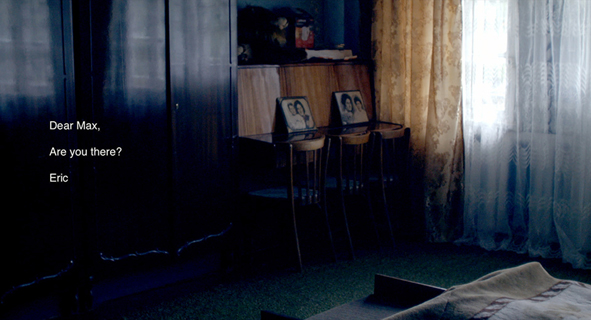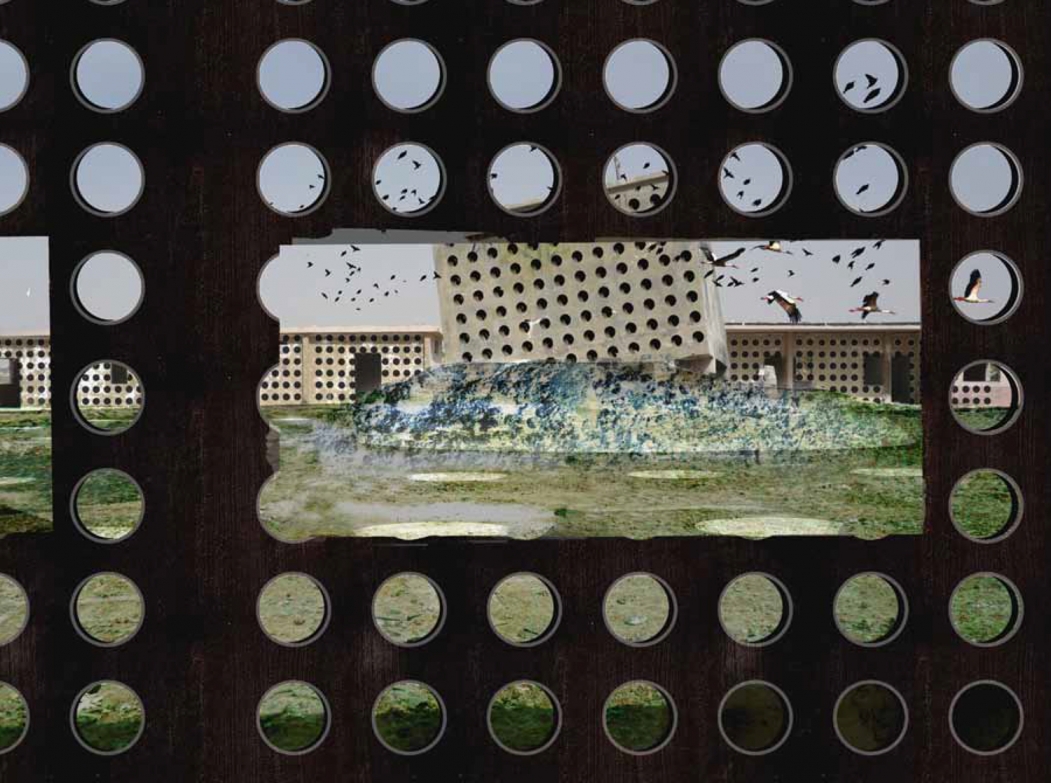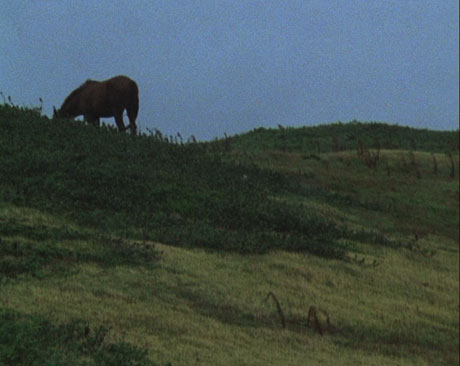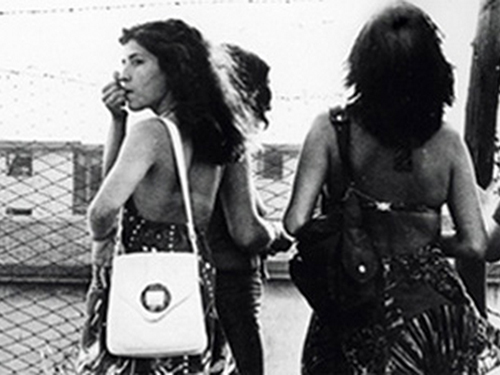15 & 18 December 2014 20:00, Galeries Brussels. In collaboration with KU Leuven / Leuven University Press and Aleppo. Ariella Azoulay in conversation with Stoffel Debuysere, preceded by a screening of ‘Khirbat’ Khize’ (Ram Loevy, 1978, 48’) and ‘Al-Midya’ (Dani Gal, 2014, 26’)
“I was born in the early 1960’s, and for years took for granted the existence of the state of Israel. My political consciousness was formed by the 1967 occupation, the injustices it led to and the urgent need to reflect on them. As a young leftist, I was raised to believe that 1948 was a distant disaster, irreversible and less acute than the endless injustices that resulted from the 1967 occupation. Years of research on citizenship and photography made it clear that the occupation was part of the Israeli political regime, and that reconstructing its schema should start in 1948”.
Is it possible to break the deadlock of the present and imagine a different future through a revisiting of the past? The theoretical and curatorial work of Ariella Azoulay is grounded in an exploration of this possibility: using the events that occurred between 1947 and 1950 as a prism, she proposes a civil perspective on the history of the Israel-Palestine conflict, one that turns away from the framework imposed by the paradigm of an unavoidable and irreversible national conflict. It is a perspective that encompasses all the inhabitants of the territory, both Jews and Arabs, which allows to reconstruct the collision between them as a product of the war. The violence inflicted on the Palestinians positioned them as the enemy of the very people with whom they had previously shared their lives, which gave way to two distinct narratives – one culminating in the creation of the state of Israel, the other situating the nakba as the constitutive event of Palestinian identity – both of which are oblivious to the origins of this division. In order to reconstruct this past, Azoulay has created an archive of photographs that have been preserved by the same regime that has previously made great efforts to erase its traces, setting limits on what can be seen and what makes sense. But an image is always more and less than itself: it can not be reduced to the intention that has produced it, nor to the meanings that it supposedly reveals or conceals. The work of Azoulay consists of undoing the dominant connection between these images that speak and the discourse that keeps them silent, by making them speak in another way, linking them with eyewitness accounts, diaries, memoirs, minutes and memoranda. In proposing to think in civil terms about a place steeped in hopelessness, she tries to open up a new horizon of civil living for both citizens and those denied citizenship, as inevitable partners in a reality they are invited to imagine anew.
This Dissent! session takes as starting point a selection of films, chosen by Ariella Azoulay, that deal with the impact of the events of 1948 on Palestinians and Jews. Documenting something that goes beyond the suffering of the victims and the glory of the victors, transcending more conventional expectations to either expose details of the catastrophe or veil it from view, these films enable spectators to witness a variety of forms of Jewish-Palestinian co-existence to which the event of 1948 put an end. These films will be shown on 15 December and 18 December. Ariella Azoulay will attend only on the 18th.
15 December 19:00, Galeries Brussels.
Kassem Hawal, Return to Haifa (1982, Palestine, Arabic spoken with English subtitles, 84’)
Return to Haifa is based on Kanafani’s novel the plot of which takes place in 1967, when Palestinian refugees living in the newly occupied territories had an opportunity to visit the places from which they had been expelled in 1948. Saeed and Safiyya, a Palestinian couple expelled from Haifa in 1948, visit the home that had been their own. Miriam, a Holocaust survivor and now a Jewish Israeli citizen who lives in their house, lets them in. She moved there with her husband shortly after the Palestinian couple had been uprooted. The Palestinian couple returns to Haifa hoping to discover something about their baby, Khaldun, whom they had left at home that April morning in 1948, not realizing that neither of them would be able to return. The abandoned baby had been adopted by Miriam and her husband who gave him a Hebrew name – Dov, now a soldier in the Israeli army. This tragic encounter depicted by the movie emblematizes the Nakba’s being not only the tragedy of the Palestinian people but also of the Israeli Jews who cannot escape confronting this past and becoming accountable for it.
Michel Khleifi, Ma’loul Celebrates its Destruction (1984, Israel/Palestine, Arabic spoken with English subtitles, 30’)
Ma’aloul, located 6 kilometers from Nazareth was destroyed in 1948 and its residents were not allowed to return but rather declared by the State “present absentees,” not allowed to have their property back, just as were Palestinians expelled out of the country. This movie makes even more explicit the assumption that the history of Israel cannot be narrated without acknowledging the Nakba, the expulsion of Palestinians and their dispossession. The movie these internally displaced Palestinians’ testimonies about the destruction of their village Ma’aloul and their dispossession and the curricula taught in a history lesson in Arab schools, compelled by the state to teach the Zionist version of the events.
18 December 2014 20:00, Galeries Brussels. In the presence of Ariella Azoulay.
Ram Loevy, Khirbat’ Khize (1978, Israel, Hebrew spoken with English subtitles, 48’)
Khirbat Khize is a TV drama directed by Ram Loevy in 1978 based on a novel (bearing the same title) by S. Yizhar, published in 1949. The novel is a step-by-step depiction of the expulsion of Palestinians by Israeli soldiers. One of the soldiers repeatedly questions their deeds. The moral voice recurds and so its rejection by the others, in ritual-like form. This ceremonial repetition, which the movie makes more explicit, can be read a a rite of passage through which Jews in Palestine became the masters of the land. Since the 1960s, the novel was included in high school curricula. In 1978, when the film was to be broadcast, the Minister of Education and Culture banned it and the workers of the Israeli TV turned spectators’ screens dark for 50 minutes, the duration of the movie.
Dani Gal, al-Midya (2014, Israel, Arabic/Hebrew spoken with English subtitles, 26’)
al-Midya was chosen as the location for shooting the film Khirbat Khize in the mid-1970s. The villagers did not see the movie until Dani Gal, the director of this film, went to the village and screened it. The film documents the encounter of al-Midya’s residents with the movie, but no less so, the way they experienced in the late 70s the arrival of a troop of actors dressed as soldiers to shoot a movie that revives the expulsion of 1948. In the absence of subtitles in Arabic (in Khirbat Khize) one of the local residents serves as a simultaneous interpreter. The Israeli soldiers’ words dehumanizing the Palestinians, repeated in Arabic by a Palestinian, produce remarkable moments of estrangement.
DISSENT ! is an initiative of Argos, Auguste Orts and Courtisane, in the framework of the research project “Figures of Dissent” (KASK/Hogent), with support of VG.
——————————————————————————————————————————————————————-
About DISSENT!
How can the relation between cinema and politics be thought today? Between a cinema of politics and a politics of cinema, between politics as subject and as practice, between form and content? From Vertov’s cinematographic communism to the Dardenne brothers’ social realism, from Straub-Huillet’s Brechtian dialectics to the aesthetic-emancipatory figures of Pedro Costa, from Guy Debord’s radical anti-cinema to the mainstream pamphlets of Oliver Stone, the quest for cinematographic representations of political resistance has taken many different forms and strategies over the course of a century. The multiple choices and pathways that have gradually been adopted, constantly clash with the relationship between theory and practice, representation and action, awareness and mobilization, experience and change. Is cinema today regaining some of its old forces and promises? Are we once again confronted with the questions that Serge Daney asked a few decades ago? As the French film critic wrote: “How can political statements be presented cinematographically? And how can they be made positive?”. These issues are central in a series of conversations in which contemporary perspectives on the relationship between cinema and politics are explored.



